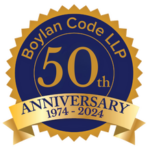By Donald A. Young, Esq.
I don’t use an alarm clock – at least not in the traditional sense. I also don’t have a home telephone. My “smart” phone serves both purposes nicely. It sleeps with one eye open on my nightstand every evening and, each morning, serenades me with my favorite ring tone to ensure I start my day on time. My smartphone’s ringing, singing, buzzing and vibrating are impossible to resist and when my trusty phone seeks my attention, it almost always gets it. So, when it vibrates and buzzes at 3:00AM and I hear it (which is not uncommon), I absolutely must check it. How can I possibly wait until the morning to read the urgent email from my favorite electronics website about the 24 hour sale that starts in only 6 hours?
Fortunately, those 3:00AM emails are almost never work-related, but to my colleagues reading this – you can rest assured that if you email me at that time there is a good chance I’ll get the message right away! Like many professionals, I’m almost always at a computer during regular business hours. As a result, between my smartphone and my computer, I am always accessible and “always on.” In today’s culture this is typified by young people who are, at all times of the day and night, making use of social media and other means of communication (Facebook, Twitter, text messages, etc.) to ensure that we are aware of the many important events in their lives. Unfortunately, these “important” events seem to happen hourly and include things such as what one ate for breakfast, that one is driving to school, one is at school, one is leaving school, and also that Fido’s newest dog food doesn’t much agree with him.
Being “always on” is not limited to office professionals and teenagers. Many of our public officials also have smartphones, work computers, laptops and the like. While this type of connectivity and availability can be a wonderful thing for obvious reasons, it can also become a complex legal issue when one considers that local government officials must comply with New York’s Open Meetings Law (“OML”).
When the NY State Legislature enacted the OML it declared that its intent in doing so was based upon the fact that “it is essential to the maintenance of a democratic society that the public business be performed in an open and public manner and that the citizens of this state be fully aware of and able to observe the performance of public officials and attend and listen to the deliberations and decisions . . .” NY OML S. 100. It is no surprise then that the OML generally requires that public business be performed during meetings which are open to the public. NY GML S. 103. Therein lies the issue – years ago in order to “meet,” generally, one had to physically join another at the same physical location (which isn’t necessarily convenient). Then came the telephone, the conference call, the email, the instant message, the net-meeting, etc. In sum, as technology developed, meetings no longer required a physical coming together. Instead, “meetings” could happen in a virtual chat room, via a series of emails, or via a series of text messages. Non-physical meetings became an option and, importantly, they are much more convenient than physical “in-person” meetings.
One can imagine a town board member causally sending a text to another board member voicing an opinion about a controversial town matter that is to be discussed at the next town board meeting. Perhaps a board member sends an “all in office” email to each other board member, arguing why the board should vote a certain way on an upcoming issue. Sending out electronic messages is so quick, and so easy. Why speculate about what the other board members are thinking when you can just ask them right this very instant, at any time of the day or night?
I am fairly confident that such emails, texts and perhaps instant messages, etc., are common among our public officials. I am also quite confident that some of those messages constitute the performance of public business outside of a public meeting, in violation of the OML. Though the OML does not directly address the issues of emails, texting, etc., the New York Department of State Committee on Open Government (the “COOG”) offers some helpful guidance in this area.
The clearest example of impermissible electronic communications involves a situation where a majority of the members engage in instantaneous electronic communication, i.e., “e-meetings” over electronic chat-rooms or instant messengers. OML-AO-3928 (January 21, 2005). Such communications violate the OML because they constitute meetings which are not held in the public (instead, they are private). The only permissible meetings under the OML are properly noticed, live, in-person meetings (during which a public official may participate via duly conducted videoconferencing). NY OML S. 102.
Emails between public officials are permissible in certain instances, while they may constitute an illegal meeting of a public body in others. For example, the COOG has determined that an email exchange between two members of a public body which does not result in a decision or vote does not violate the OML. However, a vote or decision on a public matter via email or other electronic communication is a violation of the OML, whether the communication consists of a series of emails between individual members or a series of emails between all members. OML-AO-3257 (December 27, 2000). On the other hand, addressing by email housekeeping issues such as scheduling and creating or modifying agendas is generally permissible. OML-AO-3787 (May 4, 2004).
One COOG opinion states that private communications between members which “generate dialogue may be, but are not generally inappropriate.” Id. There are numerous situations where “detailed communications” sent via email that serve as a means “of acquiring or exchanging information, knowledge, expertise or different points of view” do not violate the OML. Id. This is because it is not solely the content of the emails which determines whether they violate the OML. Rather, the COOG provides that a violation of the OML depends largely on the number of members participating – if it is a majority of the members (i.e. a “quorum”), there may be a violation of the OML. Id (while a “conversation or exchange of questions or information” among less than the majority does not implicate the OML even “if copies of those communications . . . were sent . . . to the other members”).
Notably, the number of members participating is not necessarily determined by the author and recipients of a single email. For example, an email from member 1 to member 2, and then from member 2 to member 3, and so on until member 6 emails member 7, all addressing the same public business, would violate the OML (the COOG labels this a “serial meeting”). Id. The take home message from the COOG is that a public body must be cautious to avoid “a situation where a group of members constituting a majority function or act, collectively, as a body” outside of a properly noticed public meeting. OML-AO-3787.
In conclusion, it is wonderful that public officials are “always on” because, presumably, they are more available to communicate with their constituents. However, the temptation is that a simple housekeeping issue or clarifying question between two board members may mushroom into an email discussion of public business between a majority the board, thus constituting an illegal private meeting of public officials in violation of the OML. But rest assured, public officials, that emails, tweets or status updates about your trip to Starbucks and that most-difficult decision between the chai latte and the mochachino (though I don’t necessarily know what either of those things are) are perfectly legal.
Donald Young is an Associate at Boylan Code LLP, concentrating his practice in municipal matters and commercial litigation. For more information, please contact Don at dyoung@boylancode.com or (585) 232-5300.


